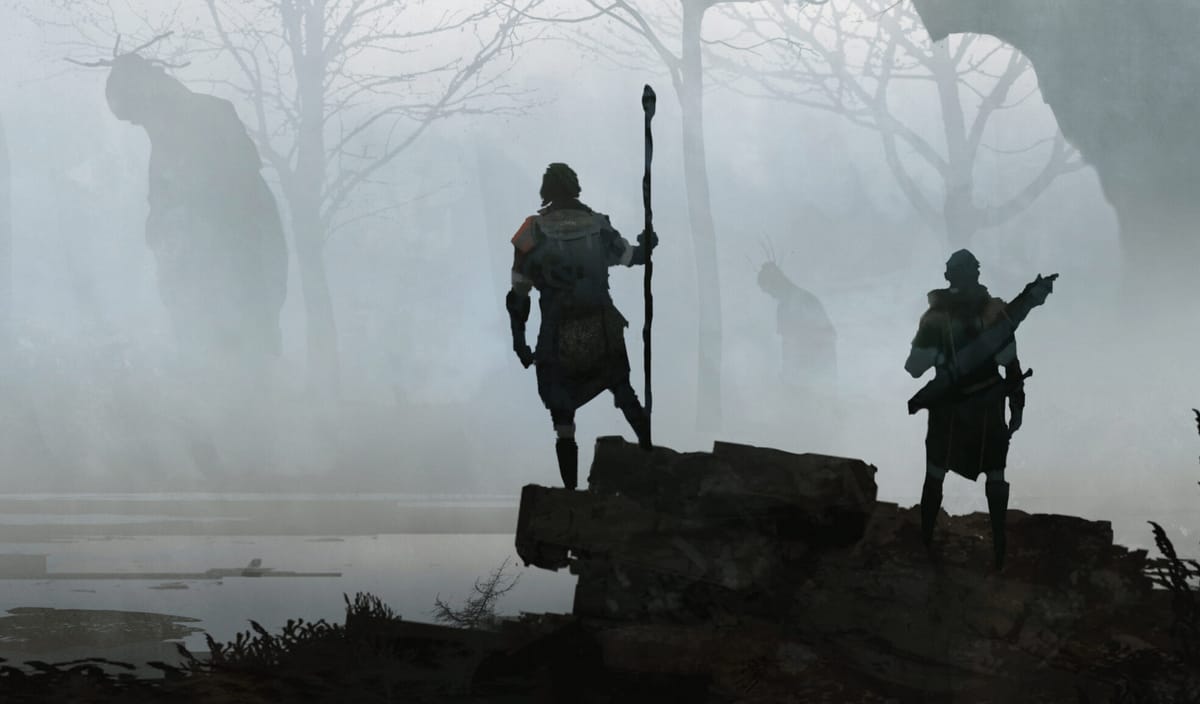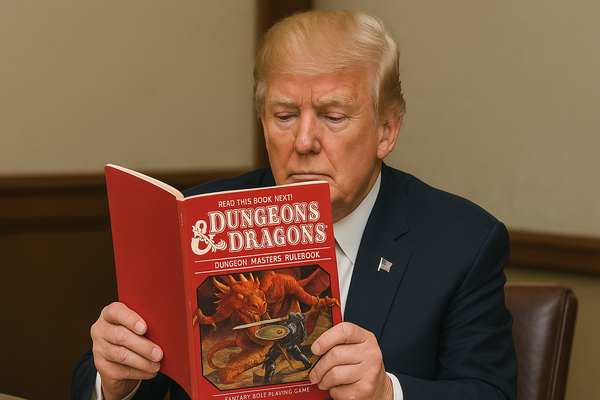10 Must-Play TTRPGs for D&D Enthusiasts

For decades, Dungeons & Dragons has been the defining experience in tabletop role-playing games (TTRPGs). It introduced millions of players to the thrill of adventure, the excitement of character growth, and the joy of shared storytelling. However, as the world of TTRPGs has expanded, so too have the options available to players and game masters alike. While D&D remains a beloved classic, an entire universe of alternative systems exists, each offering unique mechanics, settings, and playstyles that cater to different preferences and storytelling approaches.
This guide presents ten exceptional TTRPGs that offer experiences both familiar and new to D&D players. Some, like Pathfinder Second Edition and 13th Age, refine and build upon the traditional fantasy RPG framework, making them excellent choices for those who love deep character customization and tactical gameplay. Others, like Dungeon World and Troika!, embrace narrative-driven mechanics, giving players more control over the story and less reliance on rigid combat rules. And for those who seek darker, more atmospheric worlds, Symbaroum and Heart: The City Beneath provide settings filled with mystery, horror, and profound character development.
Whether you're a seasoned Dungeon Master looking for a new system to explore or a player eager to experience a different take on fantasy role-playing, this list is designed to help you discover new adventures. Each of these games offers something special, pushing the boundaries of what tabletop role-playing can be. So, gather your dice, rally your party, and prepare to embark on new and unforgettable journeys beyond the realms of Dungeons & Dragons.
Pathfinder Second Edition
Pathfinder Second Edition (PF2E) is the evolution of the original Pathfinder RPG, which was itself an advanced take on Dungeons & Dragons 3.5 Edition. Paizo created Pathfinder as an alternative to D&D when Wizards of the Coast transitioned to 4th Edition, and it quickly became a fan-favorite for players who preferred deeper customization and crunchier mechanics. PF2E refines these mechanics, making the system more accessible while retaining the depth that hardcore players love.
One of the major selling points of PF2E is its three-action economy, which streamlines combat while allowing for more tactical depth. The character-building options are vast, offering multiple class archetypes, backgrounds, and ancestry choices, making every playthrough unique. Additionally, the modular nature of the game means that Game Masters (GMs) can tweak the difficulty and complexity to suit their playgroups.
Pathfinder's Golarion setting is richly detailed, featuring diverse cultures, ancient ruins, and political intrigue that rival even the most complex homebrew D&D worlds. Whether you want to play a high-powered magic-user, a cunning rogue, or a heavily armored knight, PF2E gives you endless ways to customize your experience while maintaining a solid rules foundation. It’s an excellent choice for D&D players who want something familiar but with more depth.
13th Age
13th Age is a high-fantasy TTRPG developed by Jonathan Tweet and Rob Heinsoo, two key designers behind previous editions of Dungeons & Dragons. This game was designed to capture the best elements of traditional D&D-style gameplay while introducing new mechanics that emphasize storytelling and character development. The result is a game that is both mechanically robust and narratively flexible.
One of the standout features of 13th Age is the "One Unique Thing" rule. Each player creates one defining characteristic that sets their character apart from anyone else in the world. This ensures that every hero feels truly special and that their backstory directly influences the game’s world. The game also streamlines combat with escalation dice, which increase as battles progress, making encounters more dynamic and fast-paced.
The Icon System is another innovative feature, replacing traditional factions with powerful, legendary figures that shape the world. Players choose which Icons they are aligned with, determining their place in the world and driving the story forward. This makes 13th Age perfect for players who love the worldbuilding of D&D but want a more player-driven approach to storytelling.
Savage Worlds
Savage Worlds is a flexible, fast-paced role-playing system that supports a wide range of genres, from fantasy to sci-fi and even post-apocalyptic settings. Unlike D&D's level-based progression, Savage Worlds uses a skill-based system, where characters improve by increasing individual attributes rather than gaining levels. This allows for more organic character growth and adaptability.
One of the game’s main selling points is its Fast! Furious! Fun! philosophy. The system is designed to keep gameplay flowing quickly, with streamlined combat and an easy-to-learn set of rules. Players roll polyhedral dice (d4, d6, d8, etc.) for their skills, and rolling the highest number allows them to "explode" and roll again, creating dramatic moments. The inclusion of a Bennies system, which lets players reroll or modify outcomes, ensures that luck never fully dictates the game.
The core book of Savage Worlds Adventure Edition (SWADE) includes tools for Game Masters to easily create custom worlds, meaning it's an excellent system for homebrew settings. Whether you're running a classic fantasy adventure, a steampunk war campaign, or a cyberpunk heist, Savage Worlds can handle it all with its modular design. It’s ideal for groups looking for a more flexible and cinematic alternative to Dungeons & Dragons.
Dungeon World
Dungeon World is a narrative-driven tabletop RPG that uses the Powered by the Apocalypse (PbtA) system, focusing on improvisation and player-driven storytelling. Unlike D&D’s crunchy mechanics, Dungeon World strips away complexity to focus on dramatic moments, making it an excellent choice for players who prioritize storytelling over detailed rules.
The Move System is one of Dungeon World's defining mechanics. Instead of rolling for success based on difficulty checks (DCs), players roll 2d6 + ability modifiers, with outcomes categorized as failures (6 or lower), partial successes (7-9), or full successes (10+). This allows for interesting results, even on failures, as the GM is encouraged to introduce twists rather than outright stopping an action.
Another major strength of Dungeon World is its collaborative worldbuilding. The game begins with the GM asking the players key questions, shaping the world and its history dynamically. This makes it an excellent choice for players who love D&D’s fantasy setting but want something lighter and more improvisational.
Tunnels & Trolls
One of the oldest TTRPGs, Tunnels & Trolls was created in 1975 as a response to the original Dungeons & Dragons. Unlike D&D’s war-game-style rules, T&T focused on being more accessible and faster to play. It remains a fantastic option for those who want an old-school dungeon crawl experience with a lighter ruleset.
Character creation in T&T is simple, allowing players to roll attributes quickly and jump into adventures. The game introduced the idea of solo RPG play, letting players explore dungeons without a GM using pre-written adventures. This makes it a unique alternative to Dungeons & Dragons, especially for those who prefer a more self-driven experience.
Combat in Tunnels & Trolls is streamlined compared to early D&D editions. Players roll dice based on their weapons and abilities, comparing results to enemies' rolls rather than navigating a complex armor class system. This makes T&T a great choice for those who want classic dungeon exploration without being bogged down by overly detailed mechanics.
The One Ring RPG
The One Ring is the definitive tabletop RPG set in J.R.R. Tolkien’s Middle-earth, designed to capture the tone and atmosphere of The Lord of the Rings and The Hobbit. Unlike Dungeons & Dragons, which focuses on tactical combat and dungeon crawling, The One Ring emphasizes storytelling, character development, and the journey itself. Players take on the roles of adventurers from various cultures in Middle-earth, exploring the world, engaging in diplomacy, and uncovering ancient secrets.
One of the defining mechanics of The One Ring is the Journey System, which makes travel as engaging as combat. Unlike in D&D, where overland travel is often skipped or hand-waved, The One Ring turns it into an integral part of the game. Characters prepare for expeditions, deal with exhaustion and corruption, and encounter unexpected events along the way. This reinforces the theme of epic quests, mirroring the treacherous journeys taken by Frodo, Aragorn, and Bilbo.
Additionally, The One Ring introduces the concept of the Shadow, representing the growing influence of Sauron and darkness. Characters who engage in acts of greed, violence, or despair accumulate Shadow Points, which can lead to corruption and madness. This mechanic brings moral dilemmas into the game, making it a fantastic choice for players who love the deep lore and emotional weight of Tolkien’s universe.
Symbaroum
Symbaroum is a dark fantasy RPG with a hauntingly beautiful world steeped in mysticism, corruption, and ancient horrors. Unlike D&D, which often leans toward high fantasy, Symbaroum offers a more low-fantasy, grimdark experience where magic is dangerous and mysterious, and civilization constantly struggles against the encroaching darkness.
The game’s world, Ambria and Davokar, is rich with ancient ruins, lost civilizations, and political conflicts. Players take on the roles of treasure hunters, mystics, or warriors trying to navigate this deadly land. Unlike in D&D, where adventurers often become powerful heroes, Symbaroum maintains a sense of vulnerability—combat is deadly, and using magic can corrupt the user, leading to horrifying transformations.
The game’s mechanics are streamlined, making it accessible while still allowing for deep role-playing opportunities. The risk-reward system of magic, the political intrigue between factions, and the constant sense of unraveling hidden lore make Symbaroum an excellent choice for D&D players looking for a darker, more atmospheric alternative.
Mouse Guard RPG
Mouse Guard RPG is a charmingly unique take on fantasy role-playing, set in a world of medieval mice who defend their settlements against threats like predators, weather, and treacherous roads. Based on the acclaimed comic book series by David Petersen, this game swaps epic dragon-slaying for bravery, cooperation, and survival.
Unlike D&D’s class-based system, Mouse Guard uses a skill-based system where characters must rely on their wits, teamwork, and resourcefulness. The game emphasizes seasonal campaigns, where mice struggle to maintain their homes and fend off threats throughout the changing year. Unlike in traditional fantasy RPGs, combat is not always the primary focus—diplomacy, problem-solving, and clever tactics are just as important.
The mechanics, derived from The Burning Wheel, use a unique system of player-driven conflict resolution, where rolls determine narrative consequences rather than just success or failure. It’s a perfect alternative for D&D players who enjoy story-driven role-playing but want a setting that is both whimsical and deeply immersive.
Troika!
If D&D is a structured heroic fantasy experience, Troika! is its surreal, dreamlike counterpart. Inspired by classic British RPGs, this game features bizarre worlds, unique character backgrounds, and minimalistic yet creative mechanics. It embraces absurdity and imagination, offering an experience where adventurers can explore floating cities, cosmic wastelands, and impossible realities.
One of the most distinctive aspects of Troika! is its random character generation system. Instead of selecting a race and class as in D&D, players roll on a d66 table to determine their background, which defines their skills, abilities, and starting gear. This means that one player could start as a guildless sky pirate, while another is a cursed porcelain automaton.
The game mechanics are simple yet engaging, using a unique initiative system where characters’ turns are determined by drawing tokens from a bag. This adds an element of unpredictability to combat and ensures that each encounter feels chaotic yet dynamic. Troika! is perfect for groups who want a break from traditional D&D fantasy and instead dive into something wildly imaginative and experimental.
Heart: The City Beneath
Heart: The City Beneath is a dark, surreal fantasy RPG set in the ever-shifting underbelly of Spire, a world of mad gods, shifting landscapes, and body-altering corruption. While D&D explores heroic fantasy, Heart embraces a more horrific, personal journey into madness and transformation.
Players take on the roles of delvers, adventurers who descend into the Heart, a mysterious and ever-changing labyrinth beneath the city. Unlike D&D’s structured dungeon crawls, Heart is more about psychological horror, exploration, and body horror, where characters risk losing their sanity or mutating into something inhuman. The game’s fallout system means that every major choice has lasting consequences, making survival a true challenge.
Mechanically, Heart uses a narrative-driven system that allows players to push their limits in exchange for power—but at great risk. Instead of leveling up traditionally, characters evolve by embracing the corruption of the Heart, leading to powerful but often horrific transformations. This makes Heart a fantastic choice for D&D players who love dark fantasy but want a game that embraces personal horror, existential dread, and deep narrative depth.
Final Thoughts
Each of these TTRPGs offers something different while retaining elements that D&D players love—from deep customization in Pathfinder, to narrative-driven storytelling in Dungeon World, to dark, atmospheric worlds like Symbaroum and Heart. Whether you want something lighter and whimsical (Mouse Guard) or bizarre and surreal (Troika!), these games provide new ways to explore fantasy role-playing beyond D&D.





